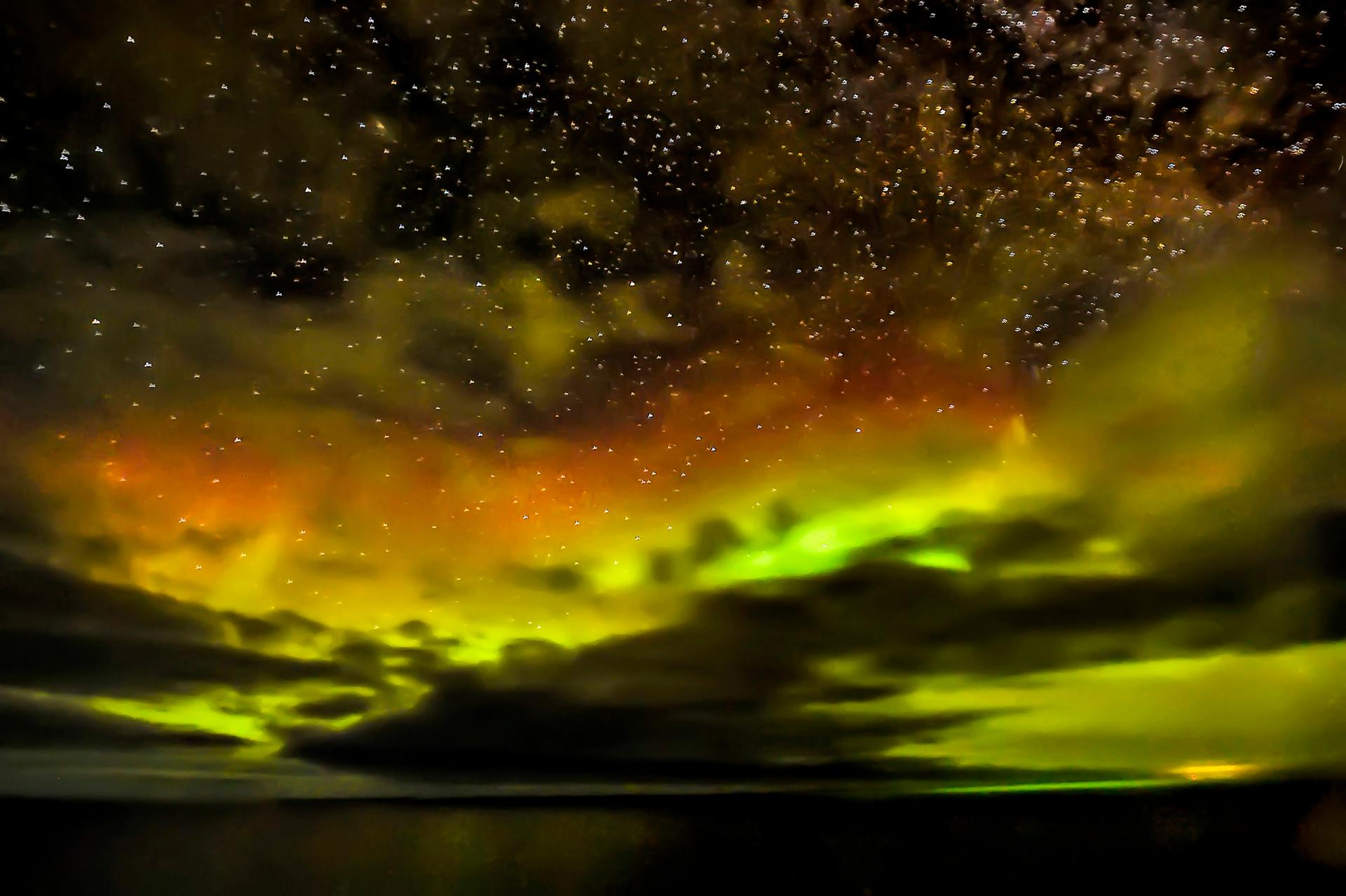Twenty-four hours of darkness is not what you’d imagine it to be. In Nunavut, the dark winter months are a time of subtle cues—a canvas of white and black for the subtler colours to play upon. The constellations and the moon bounce their light off the snow, which disappears into the shadowy distance. Ice crystals in the air glitter like fairy dust. A person’s breath is a quick burst of illuminated cloud. Like the magnificent lights of some interstellar highway, the aurora borealis rip through the dark sky, curtains aglow in deep indigo and bright green. They circle about and fill the entire sky before moving on, only to return again the next evening.
When the sun begins to return, haloed by sundogs gaining strength, so does the land’s tremendous palette of colours. Here are seven of our favourites.
Periwinkle
Between the endless daylight of summers and the long winter night are the seasons of the long sunset, where a deep lavender fades away from the sun into a dark blue, creating that elusive periwinkle in the sky.
Cyan
Traversing over the sea ice, you’ll see it in the cracks: a heart of cyan, as if a light shone up from somewhere in the depths. Then, in the summer when huge chunks of sea ice float to the shore, you can go out and walk amongst the ice, glowing glacier-like, at low tide and chip some off—perfect to melt and use for tea, or drop into a dram of scotch.
Neon green
Despite being the most common colour of aurora borealis, its beauty never loses novelty. The ghostly green that alights the sky sometimes gives way to purple, or the rarer whites and reds—but if it didn’t, the lights would be no less marvelous painted in this colour alone.
Maroon
Whereas the meadows of farm country turn yellow and fade when the temperature falls, tundra hillsides in Nunavut enflame with a deep maroon when the leaves turn on the ubiquitous alpine bearberry.
Summer whites
Among the greenery on the summer tundra are reminders of the North’s dominant shade of white. Mountain avens blow in the wind, pockets of white dotted with yellow that can be seen in incredible swathes, and Arctic cotton, as gentle to the touch as it sounds, warns of wetland underneath.
Yellow-orange
Among the numerous varieties of yellow on the land, the best is the one that signifies the ripening of cloudberries for harvest. As its ripening orange gives way to yellow, this staple fruit is ready to be eaten.
Meadow green
There are times when it looks as if the hillsides have been landscaped with turf, but as you walk closer the ground is coloured green by an intricate array of Labrador tea, moss, cranberry plants, bearberry plants, lichen, wintergreen and crowberry plants, among others. Walk these grounds you will hesitate to call them barren ever again.
